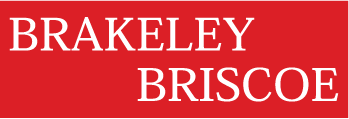From Personalized Medicine to Personalized Giving:
Building a Health Care Needs List that Inspires
Susan S. Holt
Most of us have probably struggled with how to go about organizing a needs list with accurate “price tags”. Plainly put, the needs list is where the rubber meets the road and is worth a considerable investment of planning time. A well done needs list guides the needs statement; it is an essential component of the case for support. It is the opportunity when all of your stakeholders—physicians, nurses, scientists, social workers, and other providers—get to dream. They are not only encouraged but are charged with dreaming about what is needed in their unit or department to accomplish strategic goals, build programs and facilities and, in so doing, distinguish your institution. This process pushes us to make tough decisions—what can we realistically expect philanthropy to accomplish and what must be achieved through other sources.
Vision→ Strategic Plan→Action Plan→ Program Support →Needs Assessment→ Case Statement→Tailored Proposals→Philanthropic Investment→Vision
Before going on to a step-by-step process of building a needs list, let’s take a lesson from our health care colleagues. For the past two decades or so, physicians and scientists have teamed up to develop personalized treatment strategies that will optimize individual patients’ outcomes. Personalized medicine leverages the advances in what biomedical science has learned about an individual’s “molecular fingerprint” to develop targeted therapeutics and prevention strategies
We too need customized approaches and donor-centric opportunities to present to our philanthropic partners that become a prescription for impact.
Going Back to the Basics
Strategic planning is a management tool and process that engages the institution’s key stakeholders in shaping and agreeing upon the direction of the organization. It is a time to focus on institutional priorities and develop a plan that the stakeholders are committed to achieving.
This may be one of if not the most challenging times in health care advancement in our country. The changing health care landscape is requiring institutions to reexamine how they get the business of health care delivery done. Recognize that this is a time to return to the basics. Our institution may recommit or redefine itself in response to or in anticipation of the changing environment. The strategic plan and road map are essential ingredients, and step one in arriving at a rational, compelling needs statement and list. Your vision and strategic plan become a part of the institutional DNA—the “molecular fingerprint”, if you will.
So, how does the strategic plan translate into a needs list? We recommend taking the plan to your department chair, or service line chief, together with the finance officer for a discussion about funding needs and the design of program statements to support them. Advancement can play a key role in helping guide the program statement. It is important that the author(s) address each of the following:
- Description of the program
- Position, relevance and need in the context of mission and vision
- Timing
- Resources needed
- That all-important issue of space
Once the program statement is completed, it’s time to convene its author(s), the financial officer and other key stakeholders to conduct a needs assessment for each program. If properly executed, the program statement will identify a range of resource needs which, depending upon the complexity of the program, will probably best be achieved through a mix of funders including private and federal or state funds, institutional commitments, and perhaps debt. By understanding the timing and role of each funding source, the advancement and financial officers are able to craft a plan for how one source may leverage another. Leveraging lends itself particularly well to health care advancement. Hospitals and research buildings, and even smaller clinics and laboratories, are very complex facilities requiring sophisticated and frequently, interdependent financing. Understanding the role that each funding source plays and the plan for securing them, is essential to the CEO’s and advancement officer’s ability to eloquently state the need for each funding source and their reliance upon one another.
Shaping the Needs List
Staying true to the strategic goals can be challenging! Suddenly new projects appear; just as worthy as those already identified. If this is the scenario development finds itself in, it is time for a discussion about phasing in and sequencing projects. Perhaps a new outpatient tower is built after the main hospital is completed, or the Translational Research Building comes on line after the Basic Sciences Building. The growth and design of health care facilities and programs are enormously complex. The development of new facilities involves a master campus plan, appropriate relationship building with neighborhood organizations, finance and debt structuring, the purchase of new land, securing certificates of need, cultivating buy-in from all the affected stakeholders who may or may not be affected by a move, the program statement, and board approval…all in their proper order. No wonder, the needs list may almost become an afterthought or a burgeoning billion-dollar list! Prioritizing becomes the name of the game.
A final word of caution as you work with leaders to prioritize and possibly pare down the list: it is easy for one needs list for a hospital, clinic or research building to look just like another. Resist the temptation to pull out the same model and simply re-tweak. Instead, this is the time to reflect your institutional fingerprint! By tying a truly unique needs list back to a needs statement that is representative of your institutional distinctions you will create a “molecular fingerprint” of your organization for giving. The process of designing tailored proposals that meet the interest of your donors then becomes a satisfying and highly successful outcome for your institution and your philanthropic partners!
